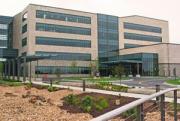Bone Loss and Osteoporosis
What are you doing for the health of your bones?
Your bones are there for more than just moral support, and like any other part of the body, they rely on you to manage their overall health. When bones are healthy, it’s easy to take them for granted. When you suffer a skeletal injury, it can be hard – if not impossible – to go about your normal routine. Simple tasks such as walking, bathing or even sleeping can become difficult.
What is Osteoporosis?
Osteoporosis is a disease caused by low bone mass, which causes bones to become brittle and prone to fracture. In 2015, National Institutes of Health estimated that more than 53 million people already had osteoporosis or low bone mass, which is a precursor to osteoporosis. According to the National Osteoporosis Foundation, up to 50% of all women and 25% of all men will break a bone due to osteoporosis.
Osteoporosis-related fractures are most common in the hip and spine. These fractures are not only painful but potentially life-changing. Information available from the physician-authored medical resource database UpToDate.com shows half of hip fracture patients never regain the ability to live independently, and between 12% and 37% of hip fracture patients die within a year.
Certain other factors can increase your risk for osteoporosis, including:
- Cigarette smoking
- Overconsumption of alcohol (regularly having 3+ drinks per day)
- Long-term use of steroid medications like prednisone
- Low body weight (less than 127 lbs)
- Rheumatoid arthritis
- Patient history or family history of bone fractures
- Health problems that can affect bone health, including diabetes, certain thyroid disorders, chronic malnutrition/malabsorption, or chronic liver disease
Prevent bone loss
Because the risks associated with osteoporosis are so high, it’s important to prevent it if possible. While bone health gets a lot of attention from people above age 50, who are at the greatest risk for osteoporosis, preventing osteoporosis starts much earlier. Bones normally go through a process of forming a new bone mass and breaking down old bone mass. In younger individuals, the formation of bone is faster than the breaking down, which is why most of a person’s bone mass and bone strength is formed between age 20 and 30. By age 30, bones have reached peak mass. Osteoporosis happens when older bone mass is broken down faster than new bone mass can replace it.
Diet
One of the most important factors in bone health is what you eat, particularly Calcium and Vitamin D. Calcium is a mineral that helps give bones their strength and hardness. When you don’t get enough calcium, your bones can lose mass, leading to osteoporosis. Your body needs Vitamin D to help absorb calcium and incorporate it into your bone structure. If you’re not getting enough of either in your diet, you may want to add supplement or vitamin. Talk to your healthcare provider for guidance on how much of these you need and if supplements are a good idea.
Calcium and Vitamin D recommendations change based on your age and what’s happening in your life. The following are the recommendations of the Food and Nutrition Board of the Institute of Medicine, which is part of the National Academy of Sciences.
Recommended daily calcium intake:
- From age 9 to 18: 1,300 mg
- Age 19 to 50: 1,000 mg
- Age 51-70:
- Men: 1,000 mg
- Women: 1,200 mg
- Age 70+: 1,200 mg
Recommended calcium intake during pregnancy or when breastfeeding:
- Age 14-18: 1,300 mg daily
- Age 19-50: 1,000 mg daily
Recommended daily Vitamin D intake:
- Adults up to age 70: 600 International Units (IU)
- Adults age 70+: 800 IU
* Most people get sufficient Vitamin D in their diet or from exposure to the sun, which causes your body to synthesize Vitamin D. However, supplemental Vitamin D may be needed for those who are housebound and/or during the winter months, when sun exposure may be insufficient.
Activity
Your bones need and love a challenge. Regular physical activity helps strengthen bones in your younger years and helps maintain bone mass and density as you age. The Surgeon General’s recommendation is 30 minutes of activity daily. Weight-bearing and resistance-based exercises are best, but any physical activity helps. If you have questions about what kind of activity is best for you, talk to your healthcare provider for options and suggestions.
Exercise is also beneficial because it promotes overall strength and flexibility. These are important because they help you avoid injury, especially falls. The stronger and more flexible you are, the better you can resist, avoid and prevent trips, slips, and falls. According to the Centers for Disease Control and Prevention, falls are the leading cause of injuries and death in older Americans, and are especially dangerous for individuals with osteoporosis.
The Importance Of Early Detection
X-rays useful for finding when a bone has been broken. They can also be used to detect when bones are at risk for fractures. Early detection can make a difference by helping detect osteoporosis early and prevent fractures before they happen.
X-rays can pass through skin, muscle, fat and blood vessels, but the calcium in your bones is much better at stopping them. That’s why x-rays are useful for detecting broken bones. That same principle can be used in a type of test to detect osteoporosis.
A bone densitometry scan, also called a dual-energy x-ray absorptiometry (DEXA) scan, works similarly to a standard x-ray, but with some key differences. Bone densitometry scans are looking for areas where the bone is less dense. They also use less radiation than a standard medical x-ray. Early detection can help medical professionals and patients work together to prevent and treat osteoporosis and avoid fractures.
Treating Osteoporosis
Patients with low bone mass and osteoporosis have a number of options that can help them prevent fractures. These techniques can be used independently, or can be used in different combinations:
- Medications: A number of medications exist that are effective in treating osteoporosis. These medications slow down the body’s normal process of breaking down old bone mass. This helps the body “catch up” on forming new bone, which can help improve low bone density or osteoporosis.
- Hormone therapy: Post-menopausal women are at higher risk for osteoporosis because of hormone changes that occur normally as women age. Hormone therapy can be used to prevent and treat low bone mass and osteoporosis for women.
- Physical activity: Improving physical activity has direct benefits on both bone health and overall health. Not only does physical activity benefit bone density, but it also helps patients improve their muscular strength, flexibility, balance, and reflexes, all of which can help prevent falls. Physical activity also has benefits on the heart and circulatory health, mood, body weight and more.





